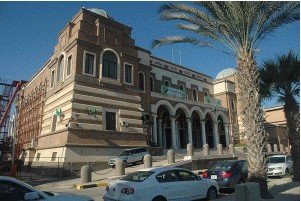
Release: Why Did the Fed Bail Out the Bank of Libya?
WASHINGTON, March 31 – Sen. Bernie Sanders (I-Vt.) today questioned why the Federal Reserve provided more than $26 billion in credit to an Arab intermediary for the Central Bank of Libya. The total includes at least $3.2 billion in loans that the Fed was forced to make public today in addition to earlier revelations under a Sanders provision in the Wall Street reform law.Sanders also asked why the Libyan-owned bank and two of its branches in New York, N.Y., were exempted from sanctions that the United States this month slapped on other Libyan businesses to pressure Col. Moammar Gadhafi’s government.
“It is incomprehensible to me that while creditworthy small businesses in Vermont and throughout the country could not receive affordable loans, the Federal Reserve was providing tens of billions of dollars in credit to a bank that is substantially owned by the Central Bank of Libya,” Sanders said.
In a letter to Federal Reserve Chairman Ben Bernanke and others, Sanders asked why the central bank made at least 46 emergency, low-interest loans to the Arab Banking Corp., in which the Central Bank of Libya owns a 59 percent stake. In the same letter, Sanders asked Treasury Secretary Timothy Geithner why the Treasury Department on March 4 let the Libya-controlled bank skirt the economic sanctions against Libya. The senator also questioned why the Bahrain-based Arab Banking Corp. is even allowed to operate branches inside United States.
“Why would the U.S. government allow a bank that is predominantly owned by the Central Bank of Libya – an institution on which the U.S. has imposed strict economic sanctions –to operate two banking branches within our own borders?” Sanders asked. The Fed transactions were made public earlier this year as a result of a Sanders provision in the Wall Street reform law that forced the U.S. central bank to reveal which financial institutions it bailed out during the financial crisis from 2007 to 2010.
In another dubious twist, the Fed loans, at interest rates as low as 0.25 percent, relied on U.S. Treasury securities as collateral. In other words, at the same time that the Arab Banking Corp. was borrowing money at almost zero interest from one arm of the government, the Fed, it was lending money at a higher interest rate to another arm of the U.S. government, the Treasury Department.
ATTENTION READERS
We See The World From All Sides and Want YOU To Be Fully InformedIn fact, intentional disinformation is a disgraceful scourge in media today. So to assuage any possible errant incorrect information posted herein, we strongly encourage you to seek corroboration from other non-VT sources before forming an educated opinion.
About VT - Policies & Disclosures - Comment Policy



